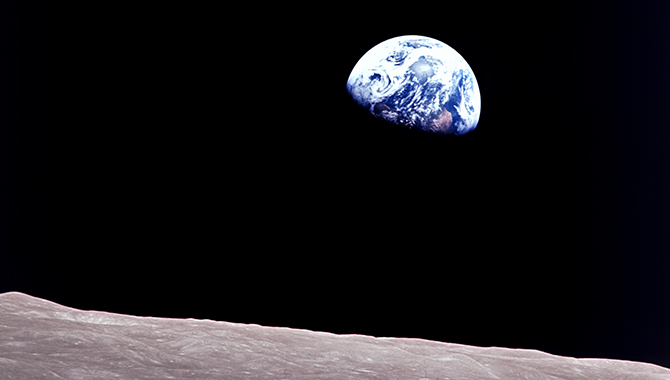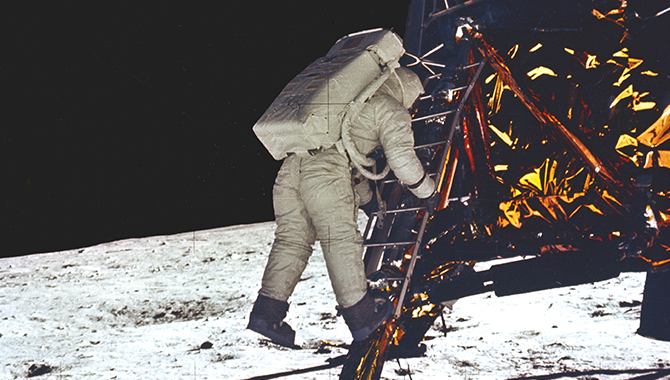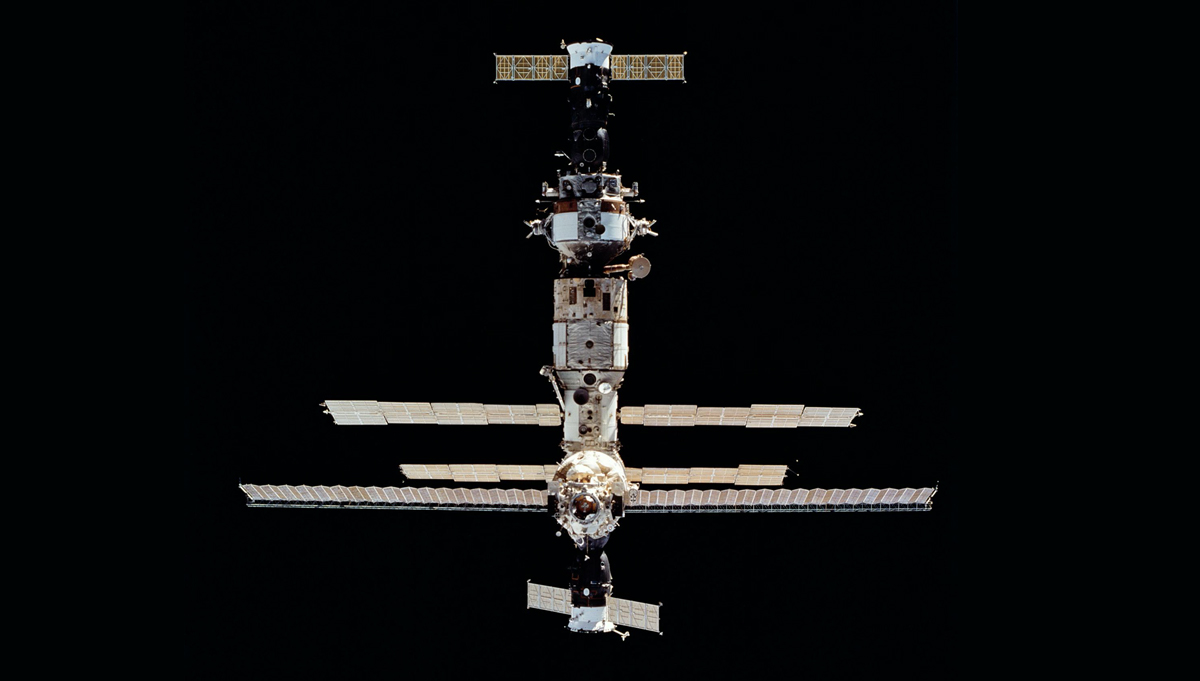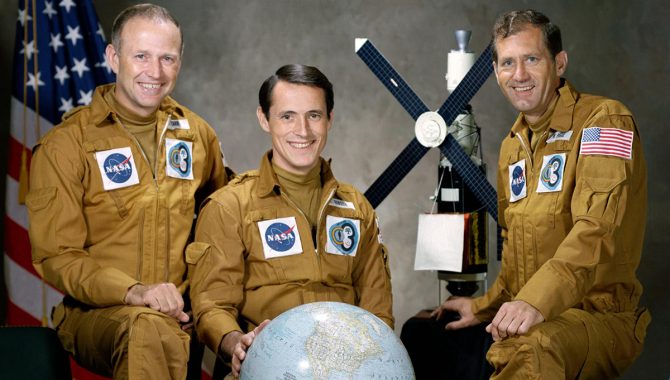
Pictured in their flight suits with a globe and a model of the Skylab space station are, left to right, astronaut Gerald P. Carr, commander; scientist-astronaut Edward G. Gibson, science pilot; and astronaut William R. Pogue, pilot.
Credit: NASA
Mission to NASA’s first space station proved human ability to live months in space.
On November 16, 1973, Commander Gerald P. Carr, was strapped into an Apollo capsule atop a massive Saturn IB rocket at Kennedy Space Center launch complex 39B, waiting. On the couches beside him were Science Pilot Edward G. Gibson and Pilot William R. Pogue. Carr was NASA’s first rookie commander since Neil A. Armstrong, who commanded Gemini VIII. Like Gibson and Pogue, Carr was about to make his first and only spaceflight, a record-breaking mission that would cast a spotlight on human factors.
Although Carr was fascinated by the U.S. space program from the days of Project Mercury, he didn’t see himself ever becoming an astronaut. It wasn’t until he was an accomplished pilot with the U.S. Marine Corps Fighter Attack Squadron 122, flying the supersonic Vought F-8 Crusader, that he applied. At each step of the astronaut selection process he was satisfied that he had done his best and would go no further.
Then, on April 1, 1966, Alan Shephard, Chief of the Astronaut Office, called Carr out of a business meeting to offer him one of the 19 spots in NASA Astronaut Group 5, a collection of explorers who walked on the Moon, pushed the limits of human space flight in Skylab, and pioneered early Space Shuttle missions. That night Carr announced to his wife, Joann, who was preparing dinner, that he had been selected and the family would need to move within the month. She assumed he was making an April Fool’s joke.
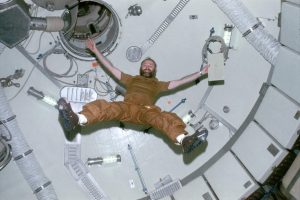
Astronaut Gerald P. Carr demonstrates the effects of zero-gravity as he floats in the forward dome area of the Orbital Workshop of the Skylab space station while in Earth orbit.
Credit: NASA
Carr worked on development of the Lunar Roving Vehicle and served as CAPCOM on Apollo 8 and Apollo 12, famously relaying the command to flip the obscure Signal Conditioning Equipment switch to auxiliary mode, which helped reboot the Apollo 12 Command Module after it was struck by lightning during launch. More than seven years later, on a bright, sunny Friday at Kennedy Space Center, it was Carr’s turn to ride. He watched as the escape tower and shroud pulled away, flooding the cabin in blinding light.
“It was incredible,” Carr recalled in an oral history. “…Riding on a booster like that is kind of like riding on a train with square wheels. You’ve got lots of noise, lots of vibration… Then sure enough, when you hit that first booster shutdown, and staging, and then the next booster kicking off, it’s just exactly what everybody has called it: a train wreck.”
The crew was bound for Skylab, NASA’s first space station, which orbited Earth from 1973 to 1975. Skylab was 82.4 feet long and 36.3 feet high, with a diameter of 21.6 feet and pressurized volume of 12,417 cubic feet, less than 40 percent of the volume of the International Space Station. This was the third crewed mission to Skylab. The first two missions included significant efforts to repair damage that occurred to Skylab during launch.
Carr, Gibson, and Pogue studied the first two missions carefully. They understood that challenges the earlier crews experienced learning to live in space on missions of 28 and 60 days would be compounded in their mission of 84 days. “I think the most important conclusion that we drew was that when the first crew came back after twenty-eight days, they were pretty wobbly, pretty weak. So, the second and third crews decided to bump the exercise periods up…,” Carr recalled.
The mission start was difficult. The crew required two attempts to successfully dock with Skylab, and space station pulled away and snapped back on the second attempt, jolting the Command Module. “…The old bird hit us back,” Carr recalled. Pogue, who had earned the nickname “Iron Belly” by that point in his career, unexpectedly experienced space sickness and head congestion early in the flight and the crew had a considerable amount of supplies and equipment to transfer from the capsule to the space station.
“It seems to me it took three or four days to just get things moved in and set up before we even really began doing our experiments,” Carr recalled. “It was a lot of setup time, a lot of preparation time. But we got all of that done and then began doing our experiments. That’s when the schedule caught up with us.”
In an oral history, Pogue recalled that because some of the experiments were focused on astrophysics, the schedule was especially exacting. “They gave you a certain time and certain angles and so forth, and you’d get that certain star. Well, if you don’t do that on time, the angles and everything don’t do any good. I mean, they’re passé.”
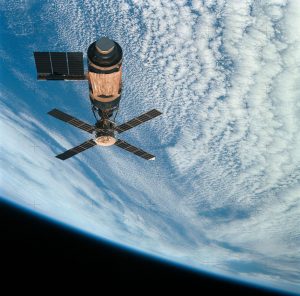
An overhead view of the Skylab space station cluster in Earth orbit as photographed from the Skylab 4 Command and Service Modules (CSM) during the final fly-around by the CSM before returning home.
Credit: NASA
The crew’s schedule included an open day every 10th day, which was to have featured a more relaxed pace and personal time. After working late most days and on their free days for several weeks, the crew of rookie astronauts reported low morale as they struggled to keep the pace. The situation reached a new level of concern on December 28 when Mission Control was unable to establish radio contact with the crew for 90 minutes.
“One of the things we did is we got careless with our radios and we forgot to configure for one of our passes, so when we went AOS [acquisition of signal] over one of the sites, people on the ground called us and we didn’t answer them,” Carr said, adding that media reports at the time said the crew had refused to speak with the ground. “So, we have lived under that stigma all these years, but basically it was we just got careless and we were busy doing other things and didn’t think to configure our radios.”
The crew and mission control eventually held a conference to air their concerns and reached a consensus on the way forward, which included prioritizing key research and putting routine tasks on a “shopping list” to be completed at any time during the day.
“That opened up the schedule, took all the pressure off. We were no longer racing the clock to get things done. That really solved the problem,” Carr recalled. “The loosening of the schedule allowed them to get their more important experiments done, and the rest of the stuff got done when we could, instead of on a real tight schedule. It worked out beautifully.”
Although the mission is often remembered and studied for the role human factors played, by the end the crew had completed all of the scheduled experiments and some extra ones, Carr recalled. The astronauts left the Command Module in rotating pairs for four Extra Vehicular Activities (EVAs), including one on Thanksgiving and one on Christmas Day that set the record at that time for longest spacewalk, at seven hours and 1 minute, and included Carr and Pogue observing and recording Comet Kohoutek.
Skylab 4 splashed down in the Pacific Ocean on February 8, 1974. The crew was recovered by the U.S.S. New Orleans. The mission had proved the ability of humans to live and work in a weightless environment for nearly three months, setting the stage for development of the International Space Station. Carr went on to work on development of NASA’s next spacecraft, the Space Shuttle, focusing on cockpit design.
“As a result of Skylab, I became a convert to human factors,” Carr said. “…We began to realize the importance of the relativity of the human to the piece of machinery you’re working with and what the weightless environment does to your skeleton and [how it] affects the way you do your work. So that precipitated my interest in working the Shuttle cockpit and doing it rather extensively. That was really my swan song.”






